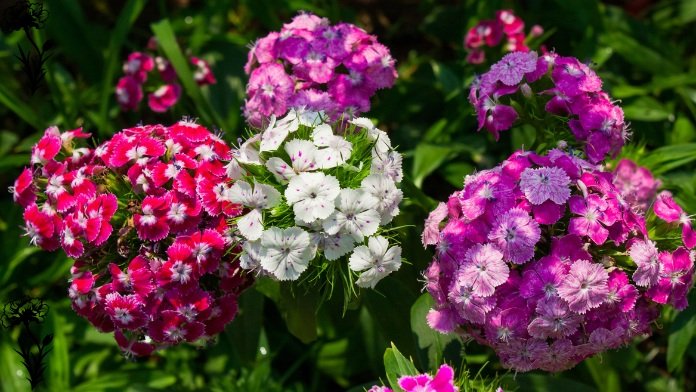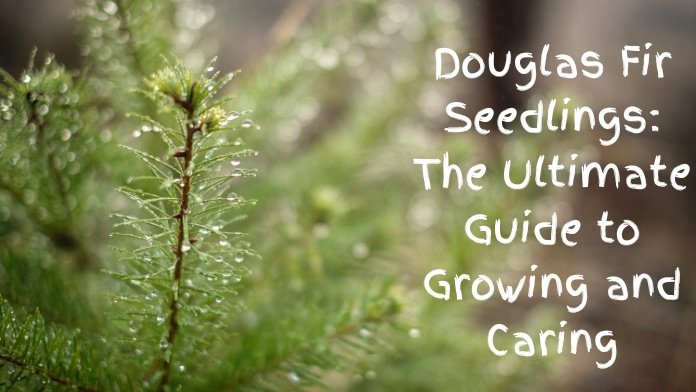Growing Dianthus Seedlings: A Complete Guide for Beginners
September 29, 2024 | by Noor Nahar Tarin

Growing Dianthus seedlings is a rewarding experience that brings beautiful, fragrant flowers into your garden. If you’re a fan of beautiful, fragrant flowers, Dianthus is a perfect addition to your garden. Known for their vibrant colours and lovely scent, Dianthus seedlings are relatively easy to grow.
Whether you’re a beginner gardener or someone with more experience, starting Dianthus from seedlings is a rewarding experience. In this guide, we’ll cover everything you need to know about growing Dianthus seedlings, from planting and care to tips for ensuring your flowers thrive.
What Are Dianthus Plants?
Dianthus, commonly known as carnations, pinks, or Sweet Williams, belong to the Caryophyllaceae family. They are loved for their fragrant flowers in various shades of pink, red, white, and even purple. Dianthus plants can be grown as annuals, biennials, or perennials, depending on the variety and your location.
Here are some reasons why Dianthus is a favourite among gardeners:
Fragrant blooms: The flowers have a sweet, clove-like fragrance.
Long blooming season: These flowers bloom from late spring to early fall.
Attractive to pollinators: Bees and butterflies are drawn to Dianthus flowers, making them excellent for pollinator gardens.
How to Start Dianthus Seedlings
Growing Dianthus seedlings is relatively straightforward. Whether you purchase seedlings from a garden centre or start them from seeds at home, the key is providing the right growing conditions for healthy development.
Choosing the Right Varieties
Before starting, decide which type of Dianthus you want to grow. Some common varieties include:
Sweet William (Dianthus barbatus): This biennial variety produces clusters of vibrant flowers.
Garden Pinks (Dianthus plumarius): A perennial variety known for its fringed petals and sweet fragrance.
Carnations (Dianthus caryophyllus): Typically grown as cut flowers, carnations are highly fragrant and long-lasting.
Make sure to choose a variety suited to your climate and garden setup.
Growing Dianthus from Seed Indoors
Starting Dianthus from seed indoors gives you a head start on the growing season. Follow these steps:
When to start seeds: Sow your seeds indoors about 6 to 8 weeks before the last expected frost in your area.
Prepare seed trays: Use seed trays or small pots with good drainage. Fill them with a light, well-draining seed-starting mix.
Sow the seeds: Sprinkle the Dianthus seeds on top of the soil and cover them lightly with a thin layer of soil or vermiculite. The seeds are tiny, so you don’t need to bury them deeply.
Moisten the soil: Water it gently to moisten it without making it soggy.
Provide warmth: Keep the trays in a warm location, around 65-70°F (18-21°C). You can use a seed heating mat if necessary.
Light: Place the trays in a bright spot with indirect sunlight or under grow lights. Dianthus seedlings need plenty of light to grow strong.
Caring for Dianthus Seedlings Indoors
Once your seeds have germinated (usually within 7-14 days), continue to care for your seedlings by:
Thinning seedlings
When they have their first set of true leaves, thin them out so that each seedling has enough space to grow.
Watering
Keep the soil moist but not waterlogged. Overwatering can lead to root rot.
Hardening off
Start hardening your Dianthus seedlings outdoors about a week before planting them. This involves gradually exposing them to outdoor conditions by placing them outside for a few hours daily.
Transplanting Dianthus Seedlings Outdoors
After your Dianthus seedlings are strong enough and the risk of frost has passed, it’s time to transplant them into your garden.
Choosing the Right Location
Full sun: Dianthus thrives in sunny spots with at least 6 hours of sunlight daily.
Well-drained soil: The plants do not like wet feet. Ensure the soil is well-draining to avoid waterlogging, which can cause root rot.
Preparing the Garden Bed
Before transplanting, prepare your garden bed:
Loosen the soil: Use a garden fork or tiller to break up the soil. Add compost or organic matter to improve soil fertility.
Spacing: The seedlings should be about 6-12 inches apart, depending on the variety. This gives them enough room to grow without overcrowding.
Transplanting the Seedlings
When transplanting, be gentle with the seedlings:
Dig a hole: Dig a hole slightly larger than the seedling’s root ball.
Remove the seedling: Carefully remove it from its pot or tray, trying not to disturb the roots.
Plant: Place the seedling in the hole and cover the roots with soil. Press the soil gently around the plant to ensure it’s stable.
Water: Water the seedlings well after transplanting.
Caring for Dianthus Seedlings in the Garden
Follow these care tips once your Dianthus seedlings are transplanted to ensure they grow into healthy, vibrant plants.
Watering
Dianthus prefers soil that’s kept consistently moist but not soggy. Water your plants when the top inch of soil feels dry. To prevent fungal diseases, avoid watering the leaves; instead, water at the base of the plant.
Feeding
Dianthus benefits from regular feeding. Use a balanced, slow-release fertilizer every 6-8 weeks during the growing season. This will promote healthy foliage and abundant flowering.
Mulching
Apply a thin layer of mulch around your Dianthus seedlings to help retain moisture, suppress weeds, and regulate soil temperature. Be careful not to pile mulch directly against the stems, which can cause rot.
Deadheading
To encourage more blooms, regularly remove spent flowers (deadheading). This helps the plant direct its energy toward producing new flowers rather than forming seeds.
Pruning
At the end of the growing season, or after the plants have bloomed, you can lightly prune Dianthus to encourage new growth next season. Trim back any dead or leggy stems.
Common Problems and Solutions for Dianthus Seedlings
Like all plants, Dianthus seedlings can face a few common problems. Here’s how to address them:
Overwatering
Dianthus seedlings are prone to root rot if the soil is too wet. Ensure your soil drains well and only water when the top layer dries.
Pests
Common pests like aphids, slugs, and snails can attack Dianthus seedlings. If you spot pests, use natural remedies like neem oil or introduce beneficial insects like ladybugs to control them.
Powdery Mildew
Powdery mildew is a fungal disease that can affect Dianthus, especially in humid conditions. Ensure good air circulation around the plants by spacing them properly and avoiding overhead watering.
Growing Dianthus in Containers
If you don’t have a garden, don’t worry! You can still grow Dianthus seedlings in containers. Here’s how:
Choose the right pot: Select a pot with good drainage holes. Dianthus does not like soggy roots, so proper drainage is essential.
Use well-draining soil: To improve drainage, fill the pot with a mix of potting soil and perlite or sand.
Place in full sun: Dianthus needs at least 6 hours of sunlight daily to thrive.
Water regularly: Keep the soil evenly moist but not waterlogged. Make sure excess water can drain out of the pot to avoid root rot.
Fertilize: Use a balanced liquid fertilizer every 4-6 weeks during the growing season.
Propagating Dianthus from Cuttings
In addition to growing from seedlings, you can propagate Dianthus from cuttings to expand your collection. Here’s how to do it:
Select a healthy plant
Choose a non-flowering stem from an established Dianthus plant.
Take a cutting
Cut a 4-6 inch stem section just below a leaf node.
Remove lower leaves
Strip the leaves from the bottom half of the cutting.
Plant in soil
Insert the cutting into a pot filled with well-draining soil. Water lightly and place in indirect sunlight.
Wait for roots to develop.
After a few weeks, roots should form, and you’ll have a new Dianthus plant!
Conclusion
Growing Dianthus seedlings is a rewarding experience that brings beautiful, fragrant flowers into your garden. Whether you’re a beginner or an experienced gardener, these flowers are relatively easy to grow and care for.
With the right preparation, care, and attention, your Dianthus seedlings will thrive, adding colour and fragrance to your outdoor space.
RELATED POSTS
View all


